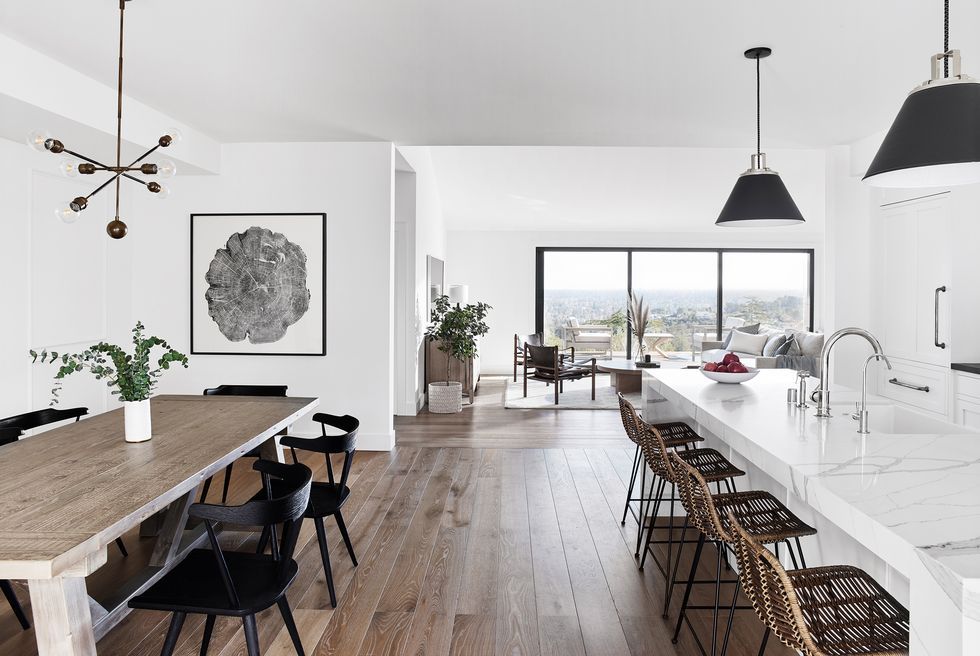
Nordic countries, particularly Sweden, and the eclectic Swedish styles they have to offer are famous for their unique interiors, which comprise white all-round and have everything rightly placed without having anything appearing unsettled. Swedish interior designs always leave viewers with a unique aspect, including how it’s possible to have all white and maintain it so while still pure and clear. In a Nordic-inspired simple room, going for white furniture will make it maintain a noble look even when painted white. Playing around with colors, positioning a picture, a pillow, a chair that has a vibrant color, or even a plant in Nordic designs has the effects of changing the whole aspects and enhancing the Nordic look. It is right to say that Scandinavian interiors offer a lesson of refined taste and art. While in Denmark, you can always find reliable shops offering Scandinavian-inspired Décor by looking at national review sites such as Danskeanmeldelser.dk. You can also try out online stores such as miniinthebox. Below are some facts on Scandinavian designs as well as tips and tricks.
The origins of Scandinavia Design
The Democratic Design
Often, Scandinavian designs are denoted as democratic designs. This was a postwar ideology that involved the thought that everyone ought to afford functional and beautiful design products. This would result in Scandinavian designs becoming hugely widespread.
Beautiful products were responsible for a better life
The name Scandinavian design is from a roadshow design that toured Canada and the US between 1954 and 1957. It promoted the way of life of the Scandinavians. Although the Scandinavian design wasn’t popularly known until the mid of the 20th century, the origins of the design date back towards the end of the 19th century.
Scandinavian designs are highly characterized by modernism. At the start of the 20th century, there was a departure from the traditional view on social organization, architecture, and art. The mass requirement of design and functionality was further strengthened by war, leading to an interest in Scandinavia design. This, coupled with the continuing harsh condition, led to sober and practical products. In Northern Europe, such as Norway, Sweden, Finland, and Denmark, people worked more with what was provided by nature, which led to minimum waste and almost no room for unnecessary ornaments. The cold nature of the north only required products that worked with a slight emphasis on beauty. Also, although Scandinavian designs are characteristically minimalist, they include a sense of elegance. The cold and long winters necessitated cozy living rooms, attributed to the excellent design: a combination of good looks and practical characteristics.
Tips and tricks in Scandinavian design
Make use of natural material, specifically wood
The main defining elements of Scandinavian design are the admiration offered to them for their craftmanship and nature. This is made possible by their warm woods, raw enamel aluminum, and pressed steel. Floors are also crucial in Scandinavian designs. Instead of having a carpet covering the floor, a Scandinavian design should include a wooden floor.
Colors
Scandinavian interiors have a simple white color scheme. If you want to give your home’s interior some diversity, you have some light grey. An impressive aspect of Scandinavian designers is that they perceive the ceiling, floors, and walls to be the canvas to create the art. They, therefore, make use of sophisticated pieces of furniture and fixtures in colors that are lively, giving the Nordic living room a unique appearance.
Elegant light fixtures
Scandinavian style combines style and function to achieve powerful, eye-catchy, and practical interiors. Light fixtures also make an important statement when it comes to light fixtures. Some of the light choices to go for while creating your Scandinavian living room are rare diamonds.
Textures and layers
People living in Scandinavian countries include their country’s sharp weather conditions in their interiors. This is seen in the variety of natural materials that are in their Nordic design houses. Generally, inside a Nordic style living room, you’ll find leather, linen, fur, or cotton, which are luxurious, warm, and make the place comfortable. Scandinavian designs also have an element of texture, which includes sheepskin, knit, and luscious throws.
Eco-friendly
Scandinavian designs have incredible admiration and respect for nature. Thus, Scandinavians ensure that they achieve eco-friendly houses. This is, for example, achieved by including solid wall and roof installation and double or triple window glazing for their homes.
In conclusion, a newbie might find it hard getting to know more about Scandinavian designs. However, with this article, the reader will find informative information regarding Scandinavian designs.